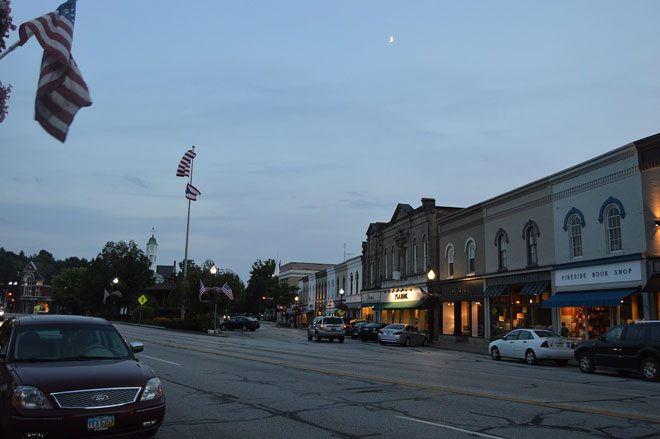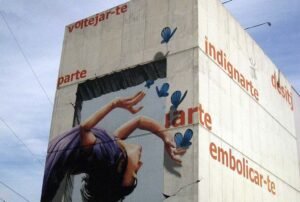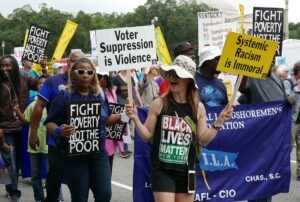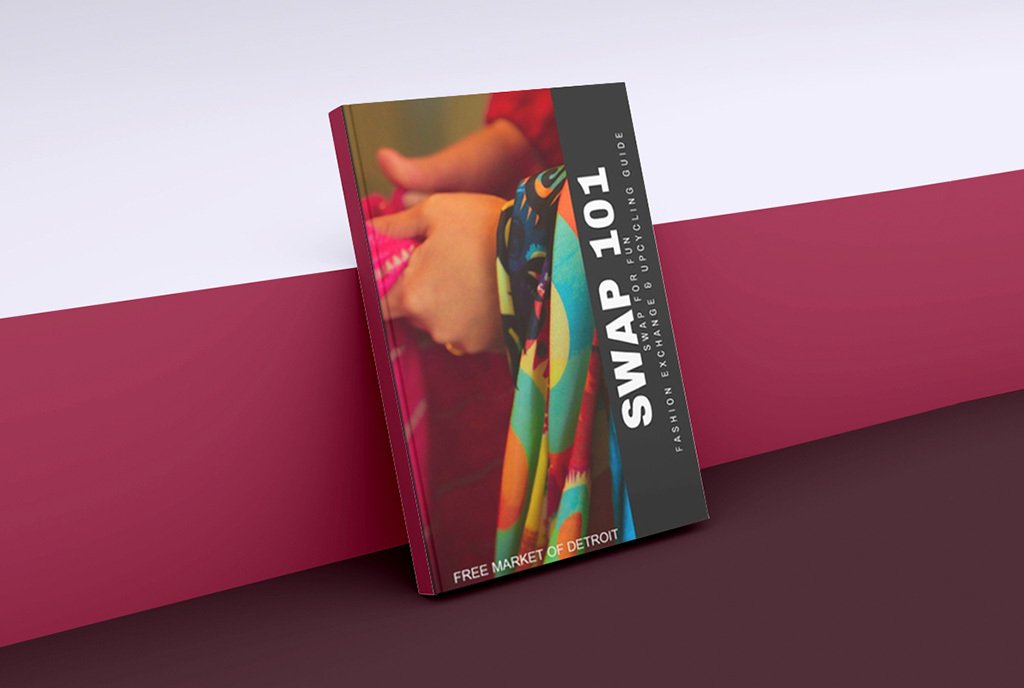
Jared Bray’s article “These Cleveland Stories Will Change How You Think About the Rust Belt” reviews the findings in a new book on Cleveland’s image building in the face of slow decline over the last seven decades. According to Bray’s article, the premise of J. Mark Souther’s new book, Believing in Cleveland: Managing Decline in ‘The Best Location in the Nation’ is that Cleveland’s civic elites put image renewal ahead of substantive renewal of the body politic. “Managing the city’s image eventually became its own exercise, connected to but distinct from more concrete measures of urban vitality,” he claims.
Bray’s NextCity article cites the quick rise and fall of the establishment’s support for Carl B. Stokes as a turning point for civic leaders. Bray cites Southers’ belief that the civic establishment expected Stokes “to somehow bring an end to riots that had ravaged the neighborhood of Hough in the summer of 1966.” While the term wasn’t used at the time or in the article, the feeling was that Stokes could usher in a “post-racial” era just by being the first elected Black mayor of a major city. The Glenville uprising shattered that vision of racial harmony for many of Stokes’ early supporters.
The fact that funds from a philanthropic slush fund, Cleveland Now, were reported to have made their way into the hands of an instigator of the Glenville shoot-out was bad enough. But Stokes’ decision to remove white police officers and the National Guard from the scene of the urban unrest in the Glenville neighborhood likely triggered a more visceral reaction. The elite interpreted the action to mean that the mayor was taking sides with the black community.
For many other Clevelanders, the mayor’s drastic action was seen as a logical response, taken in order to tamp down the unrest in the streets. The Hough riots just two years earlier showed that the appearance of the police increased the intensity of the unrest. A story at the website PoliceMag recalls that “CPD’s mere presence, even on routine calls, drew large hostile crowds, and police radios blared with ‘officer in trouble’ calls. The tension on Cleveland’s seething East Side was so thick, any small incident could easily result in rioting.”
According to Bray, the upshot of civic disenchantment with Stokes, coupled with the bad press generated by the now-infamous fire on the Cuyahoga River in 1969, prompted an outburst of civic boosterism that came to replace substantive investment in economic and social change. Bray notes that “leaders in Cleveland gradually became more preoccupied by the city’s image locally and in the wider world.” And the pattern continued even after Stokes’ decision not to seek re-election in 1969.
Sign up for our free newsletters
Subscribe to NPQ's newsletters to have our top stories delivered directly to your inbox.
By signing up, you agree to our privacy policy and terms of use, and to receive messages from NPQ and our partners.
The social and economic needs of grassroots Clevelanders did not go away and grassroots Clevelanders found a new outlet for change. Cleveland-based scholar and activist Randy Cunningham details the explosion of civic engagement that followed Stokes’ departure. In Democratizing Cleveland: The Rise and Fall of Community Organizing in Cleveland, Ohio 1975-1985, Cunningham charts the development of a network of neighborhood organizations that fought for social benefits, writing, “Starting in the early 1970s, activists who had been inspired and educated in the civil rights and anti-war movements began to search for a grassroots response to the failures of elite initiatives to solve the problems of the city’s neighborhoods.” The Cleveland Catholic Diocese, aided by other faith-based groups and a few charitable foundations, nurtured and funded the community organizing movement. This new movement challenged economic disinvestment and redlining by financial institutions. The groups argued for fairness in the delivery of city services and demanded that new development should serve the neighborhoods, not just the downtown area.
A climax of the community organizing strategy was a demonstration at the Chagrin Valley Hunt Club where inner-city residents confronted civic elites in their quaint exurban getaway. The shock of encountering inner-city residents bussed into the village traumatized the civic elite. Community groups which had benefited from philanthropic grants to support their organizing work were defunded immediately. Other groups not directly involved in the “hit” got the message that grassroots activism would not be supported. Cunningham notes: “The attitudes of participants in the action at the Hunt Club, in retrospect, vary greatly. Many agree that it certainly was one of the most memorable hits and thought it was fun. Some look upon it as a youthful indiscretion, and there are those who considered it to be a demonstration of the power of the movement at this particular time. The powerful in Cleveland were starting to worry about the power of the neighborhood movement, according to this narrative.”
In short order, the once-adversarial neighborhood organizations were transformed by new leaders and new funders into community development programs, which undertook small-scale economic and housing development efforts. Unfortunately, all of these efforts taken together were not adequate to stimulate an economic turnaround. At best, they worked to slow the ongoing decline.
Then, around 2005, Cleveland’s neighborhoods began being ravaged by a home foreclosure crisis, a full four years before the “housing bubble” burst nationally, leading to the Great Recession. Once-stable low- and middle- income minority households saw their savings wiped out and their neighborhoods pockmarked by abandoned properties. When the housing bubble burst in 2007-08, the gradual collapse became a flood. Cleveland lost 81,646 residents from 2000 to 2010.
This past summer, the Economic Innovation Group cited Cleveland as the most economically distressed of the top 100 metros…for the second year in a row. Crain’s Cleveland Business notes that “Cleveland isn’t “keeping up in the economic expansion.” That’s one way to put it.
Contrast the elite response to the damage done in the Great Recession. Quicken Loans entrepreneur Dan Gilbert has received financial support from the city and the county to renovate his Quicken Loans arena. Gilbert’s NBA Cavaliers won an NBA championship in 2016 and his Quicken Loans arena was the site of the Republican National Convention that nominated Donald Trump. “The comeback city” was the message that went out to America.—Spencer Wells













